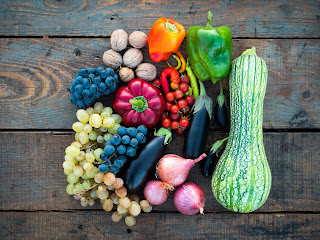Macalester's Community: Beyond Humans
By: Clare Mazack
My first-year course (a biology class) was on the first floor of Olri in the big windowless classroom immediately on the left once you enter the glass doors. By the second day of college, I had memorized the 6.5 minutes it took to walk there, the names of all the buildings I passed, and the faces of the other students with morning classes– while awkwardly shoving a muffin into my mouth. Yet I failed to ground myself in this new place on the most fundamental level: while I always smiled at the crown of trees lining the pathway, I never learned their names, or their story in this place, nor the names and history of any of the other plants spread throughout our community. Three years later, I’m still at a loss. What does it mean that I can memorize pages of neurological terms from my biology class, (or Cafe Mac’s muffin rotation schedule, for that matter), but not a single one of the flowers I stumble by several times a day? For all the knowledge passing through Macalester students about the world we live in, why can’t many of us identify the diverse plant life we live amongst?
As spring turns into summer, and the number of students walking through campus gets fewer by the day, plants suddenly seem to be taking up more space than people at Macalester; I notice myself thinking more about their presence, and what it means to be in community with them. In her book “Braiding Sweetgrass,” Robin Wall Kimmerer- a well-respected botanist and member of the Citizen Potawatomi Nation- encourages us all to expand our sense of community to include the non-human world. In practice, this means calling plants “who,” not “what,” and referring to them by name- not necessarily the colonized, roman-based names researchers use to identify species, but names that mean something to the people who have gotten to know them. In getting to understand and name plants, she reminds us of the damage that colonial culture, and the English language specifically, has had on many people’s interactions with the natural world, writing, “the arrogance of English is that the only way to be animate, to be worthy of respect and moral concern, is to be a human” (Kimmerer, 57). Kimmerer’s native language of Ojibwe, in contrast, has a “grammar of animacy,” that inherently describes the life and relatedness among all life forms when speaking of a subject. She encourages us to learn to think and speak about our non-human relatives with a grammar of animacy, noting that “immigrants came to these shores bearing a legacy of languages, all to be cherished. But to become native to this place, if we are to survive here, and our neighbors too, our work is to learn to speak the grammar of animacy, so that we might truly be home” (Kimmerer, 58).
include in this blog post, I’ve decided to go with a tree who (and note the use of “who,” not “what”) is in full bloom with sweet ripe berries right now. Common names include “Serviceberry,” “Saskatoon,” “Shadblow,” or “Juneberry.” I’m not knowledgeable enough to know which name was the original or fits best, but I do know that she takes care of us for the month of June, providing daily snacks and a gentle presence. The tree is native to Eastern Minnesota, and you can find her along the outskirts of Mac’s campus- by the language houses beyond Jwall, across the street from the sustainability office, and a few other spots as well.
I dwell often on what it means to be a part of the Macalester community. We have work to do among our human-to-human relationships, and now I realize we have work to do among our human-to-plant relationships, too. We must think more openly about our relationship to, and with, other living beings beyond the human realm, and how we define the concept of “community” that we so often like to lay claim to.
I don’t mean to assume that all other students are as ignorant as I am about naming plants. I’m sure many have taken more care than I have to get to know the names of those around us, or perhaps grew up in a culture that valued such relationships and knowledge. But for those of us who can study out on the lawn but can’t think of a name for the large creature giving us shade, I’d encourage us to look a little deeper into the place we live to better understand the community we’re actually living in.
.


Comments
Post a Comment